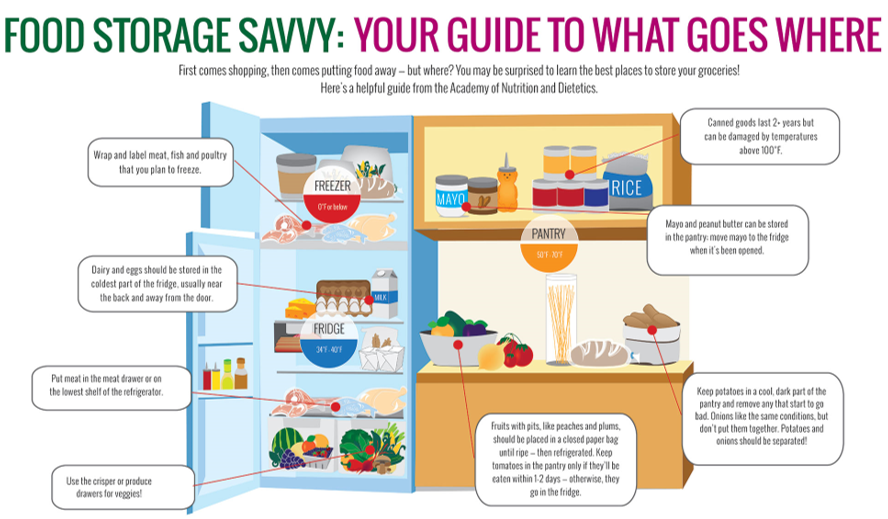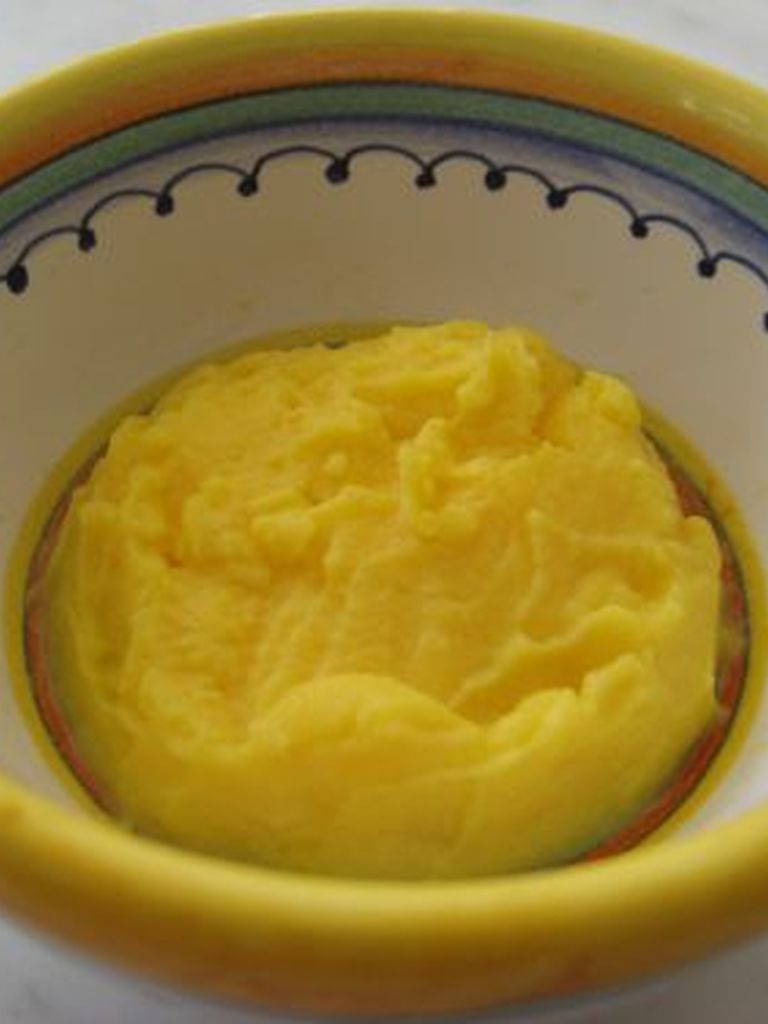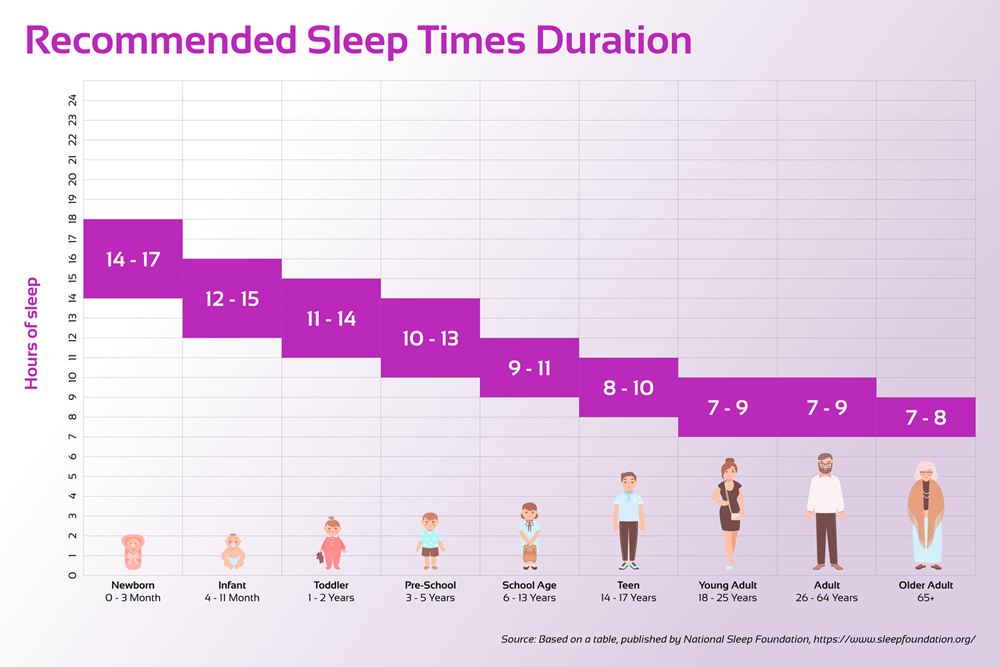7 month old baby food plan
Baby Meal Plan: 6 to 9 Month Old
What should you know about feeding your 6- to 9-month-old?Learn about how to introduce solid foods to your baby
Know that what foods you introduce now help influence baby’s preferences in the future
Explore menus that help you understand the transition from purees to soft solids
Starting solid foods is an exciting time for you and your baby. The American Academy of Pediatrics and the World Health Organization recommend introducing solid foods around 6 months of age.1, 2 Check out our signs of readiness article and speak with your baby’s pediatrician to help determine when your little one is ready to start solids.
While starting solids, you will continue to provide most of the essential nutrition and hydration your baby needs from breast milk or formula, while also exposing your baby to a new world of diverse flavors and nutrients. In fact, this is one of the most influential periods in your baby’s taste development. 3, 4 Your baby will most readily try and accept all kinds of foods at this age so it’s important to offer a variety of different flavors from meal to meal.
There are two meal plans below: One for starting solids with purees, and one for when your little one starts to advance textures. Both have snack and recipe ideas to help you get started. They also have plenty of flavor variety to help maximize your baby’s taste
development.
Read more: Learning to Love Healthy Foods
Pro tips for 6- to 9-month-old baby meal plans:Eating solids at this age is mostly about letting your baby explore new flavors and textures. Breast milk or formula will remain your baby’s primary nutrition source during their first year, so continue to give breast milk and/or formula just as you were before starting solids. Your little one will begin to reduce how much formula or breastmilk they take as they get closer to 1 year.5, 6, 7
For breastfed babies, introduction of solids at 6 months helps your little one get enough of certain nutrients.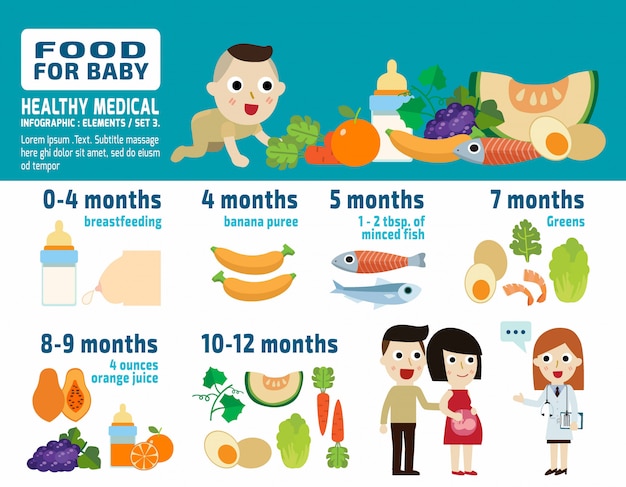 For example, at 6 months stored iron begins to diminish. Since breast milk is not a good source of iron, including some iron-rich foods, such as fortified cereals and pureed meats, will help your little one get enough.8 For more information, chat with baby’s health care provider for their recommendations.
For example, at 6 months stored iron begins to diminish. Since breast milk is not a good source of iron, including some iron-rich foods, such as fortified cereals and pureed meats, will help your little one get enough.8 For more information, chat with baby’s health care provider for their recommendations.
For more information on the nutrient needs of your older baby, check out: Nutrients to Look for at 6-12 Months
How much should I feed my baby?
At around 6 months old, you can start by offering 1 to 2 tablespoons of food once or twice per day. Once your little one gets the hang of eating and shows more interest, slowly begin offering foods 2 to 3 times per day and ¼ to ½ cup at a time.9, 10
Remember to listen to your baby’s hunger and fullness cues throughout their feeding journey, rather than go by specific portions. Your little may take more or less each day; by responding to their feeding cues you’ll be providing them with just what they need.11
It’s important to advance texture once your baby is comfortable.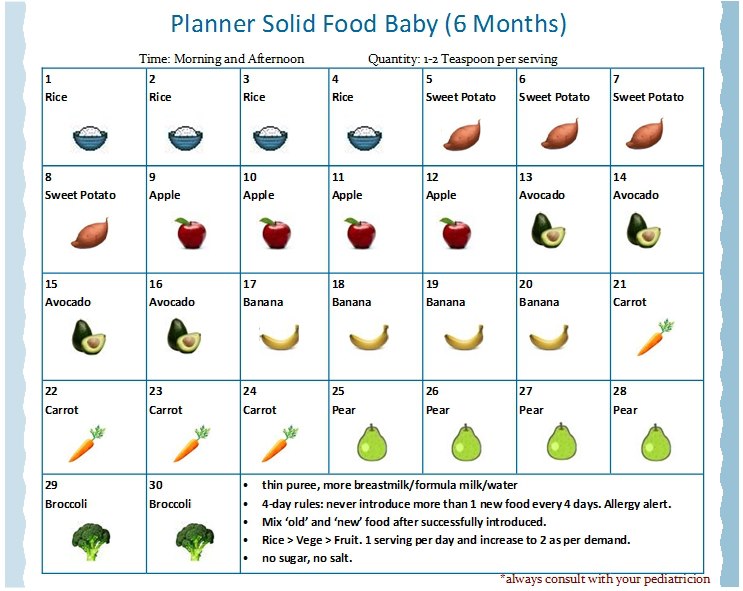 Start with thin, pureed foods, thickening them a bit as baby gets used to eating. Next, move to lumpy, mashed foods; followed by finely chopped, soft foods.12
Start with thin, pureed foods, thickening them a bit as baby gets used to eating. Next, move to lumpy, mashed foods; followed by finely chopped, soft foods.12
Read more: Introducing Solids: First Foods & Textures
Introduce one single-ingredient new food at a time
Allow for 2 to 3 days before introducing another new food to make sure your baby is not allergic or intolerant to these foods. Foods most often associated with allergies are eggs, soy, peanuts, tree nuts and seeds, wheat, fish, shellfish, and cow’s milk (drinking cow’s milk is not recommended before 12 months, but milk can be used in small amounts in baked or cooked foods, and baby can also eat yogurt and cheese as long as there is no allergy or intolerance).13
Read more: Introducing Major Food Allergens to your Infant
By 9 months of age, your baby should be eating foods from all food groups and be able to handle small, soft pieces of finger foods. Pay attention to your baby’s cues, have fun, and let your baby set the pace while offering your baby healthy foods that contain important nutrients to set the standard for healthy eating patterns.
Baby doesn’t like a food? Try, try again!
Your baby may grimace, wrinkle their nose, or make other faces when they try new foods and textures. Know that this is completely normal and doesn’t mean your little one dislikes the food or is being picky. Babies may need to taste a food up to 10 or more times before they start to accept it, so just keep offering (though not forcing) that food.14
Remember, starting solids is mostly about introducing a variety of flavors and textures – and keeping it fun and stress-free!
If you have questions about introducing solids or advancing textures, reach out to our team of registered dietitians for free! They are here to help on our free live chat from Monday through Friday, from 8am–6pm ET. Chat now!
Around 6-month old meal plan: First foods and purees
Breakfast:
Option 1: Whole Ancient Grain Baby Cereal
Option 2: Mashed avocado
Option 3: Avocado and Pea Puree
Option 4: Apple and acorn squash mash (pureed apples and squash mixed)
Option 5: Pureed peaches or soft cooked pears
Lunch:
Option 1: Root Vegetable Puree
Option 2: Unsweetened whole milk yogurt
Option 3: Avocado and Pea Puree
Option 4: Pureed apples
Option 5: Quinoa cereal
Dinner:
Option 1: Mashed “Banacado” (banana and avocado mashed together)
Option 2: Baby Muesli with Peach Yogurt
Option 3: Tropical medley (mashed papaya and mango)
Option 4: Garden veggie and fruit combo (mix mashed/pureed apples, spinach and peas)
Option 5: Beet and Cantaloupe Puree
Breakfast:
Option 1: Unsweetened yogurt with mashed peaches
Option 2: Oatmeal cereal
Option 3: Whole grain waffle strips
Option 4: Orange Sunny Soup
Option 5: Soft scrambled egg
Lunch:
Option 1: Soft cooked whole grain pasta with olive oil and parmesan cheese
Option 2: Slivers of turkey with peas
Option 3: Unsweetened applesauce and shredded or cubed cheese
Option 4: Chickpea and Carrot Spread
Option 5: Cottage Cheese with Cinnamon and Diced Strawberries
Dinner:
Option 1: Soft cooked slivers of chicken, with steamed carrots
Option 2: Ginger Carrot & Sweet Potato Mash + Lean Beef
Option 3: Small chunks of low mercury fish, like cod
Option 4: Soft steamed chunks of broccoli or green beans
Option 5: Lumpy, mashed kidney or black beans
We know parenting often means sleepless nights, stressful days, and countless questions and confusion, and we want to support you in your feeding journey and beyond.
Our Happy Baby Experts are a team of lactation consultants and registered dietitians certified in infant and maternal nutrition – and they’re all moms, too, which means they’ve been there and seen that. They’re here to help on our free, live chat platform Monday - Friday 8am-6pm (ET). Chat Now!
Read more about the experts that help write our content!
For more on this topic, check out the following articles and recipes:Starting Solids: Purees versus Baby Led Weaning
Starting Solids: Baby Led Weaning
The Division of Responsibility: Helping Avoid Picky Eating
Feeding Tips for Healthy Weight Gain in Babies and Toddlers
Our meal plans offer recipe and meal suggestions for your child. They are not designed to replace your doctor’s recommendations, nor do they take into account special nutritional needs, including allergies and intolerances. The meal plans suggest serving sizes that may or may not be appropriate for your child.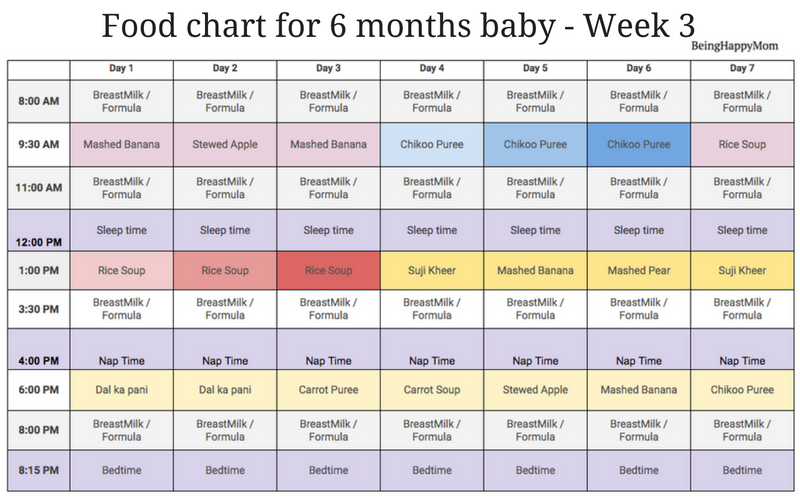 Please consult your doctor to determine what is best for your child.
Please consult your doctor to determine what is best for your child.
An Authoritative Guide by Our Experts
Your little one is now 7 months of age. Should you change up his meal schedule? Or adjust the amount of food? Here’s what our experts have to say.
By Health Promotion Board in collaboration with A/Prof Mary Daniel Lourdes, Head & Senior Consultant, Clinical Services, Department of Child Development, KK Women's and Children's Hospital.
At 7 months old, your baby may already be on two solid meals a day. Fret not if he’s eating less solid food than that, as different babies progress at different speeds.
Recommended Number of Servings (7 months)
Here are the recommended number of servings per day for your baby's development. Remember, these numbers are only recommendations. Let your baby decide how much he wants to eat!
| Brown rice and wholemeal bread | Fruit | Vegetables | Meat and others | Milk (breast/formula) |
| 1-2 | ½ | ½ | ½ | 500-750ml |
7-month-baby Meal Schedule
Your meal schedule for the little one might look like this:
- Early morning snack: 150ml breast milk/formula
- Breakfast: 3 to 4 tablespoons of rice cereal mixed with 60ml breast milk/formula
- Mid-morning snack: 180ml breast milk/formula
- Lunch: ¼ to ¾ bowl* of solid food
- Afternoon snack: 180ml breast milk/formula
- Dinner: ¼ to ¾ bowl* of solid food
- Evening snack: 180ml breast milk/formula
*Rice bowl
Right now, your baby’s meals may typically be made up of a base wholegrain/grain (e.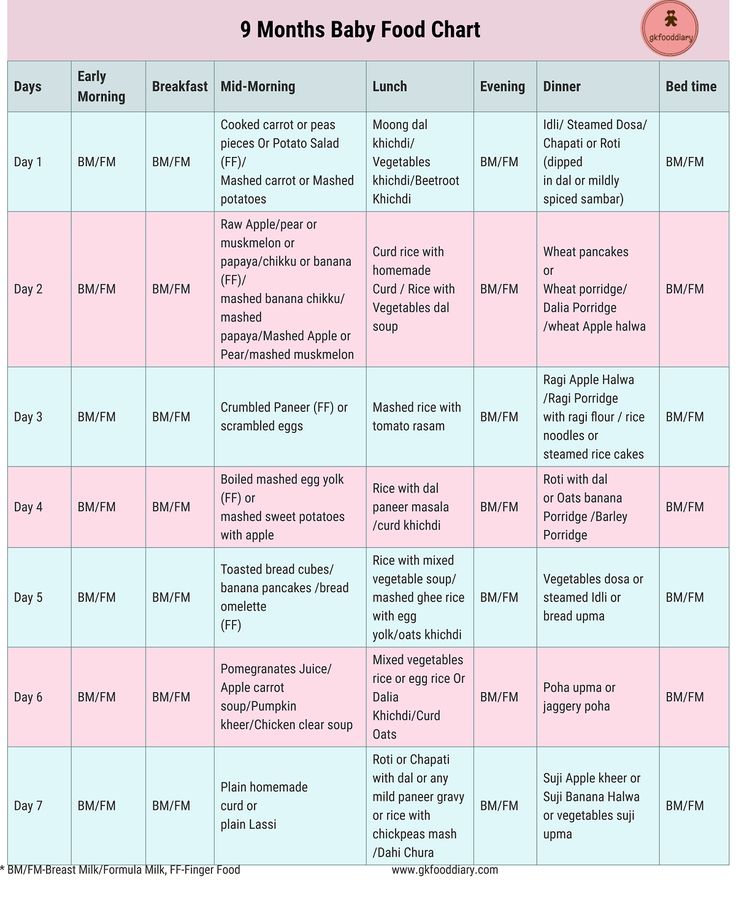 g. porridge) mixed with vegetable (e.g. pureed broccoli) and meat/others (e.g. tofu), perhaps with a tiny portion of fruit (e.g. apple and other fruit puree) when your baby feels up for it.
g. porridge) mixed with vegetable (e.g. pureed broccoli) and meat/others (e.g. tofu), perhaps with a tiny portion of fruit (e.g. apple and other fruit puree) when your baby feels up for it.
Broken down into these components, there are countless yummy meal combos you and your baby can explore. Just mix and match and let your creativity go wild! Read on for ideas on what you can feed your 7-month-old tot.
Related: Nutrition for Your Toddler
7-month-old Baby Food Ideas for Mummy and Daddy
Along the grain
You know brown rice cereal and brown rice porridge are good staples for your baby. But you’re ready to branch out. Why not try other iron-fortified cereals made from other wholegrains such as oat, barley, or millet? They are great sources of vitamins and minerals.
Related: No Wholegrain, No Gain
Variety of veggies
Pureed carrots, pumpkin, spinach… your baby might have already tried these typical “baby foods”. Expand the veggie menu: your baby might enjoy other vegetables such as butternut squash or brinjal, which can both be steamed until tender for effortless mashing. Broccoli and cauliflower are also mashable veggie options that are good sources of vitamin C.
Expand the veggie menu: your baby might enjoy other vegetables such as butternut squash or brinjal, which can both be steamed until tender for effortless mashing. Broccoli and cauliflower are also mashable veggie options that are good sources of vitamin C.
Related: Harness the Goodness of Fruit and Vegetables
Fruity fun
As for fruit, mummy and daddy can try venturing out of the sweet zone: your little one might enjoy the tart taste of fruit like cherries or plums (pits removed and pureed). So try feeding your little one some sour treats — and watch his face for when the flavour first hits him. Adorable! Note to mum and dad: no citrus fruit yet, though, as those are too acidic.
Baby not into sour fruit just yet? Why not try feeding him every millennial’s favourite fruit: the avocado! It’s easy to mash, and adds a subtle sweet flavor and creaminess to rice cereals.
Related: Fun Fruity Facts
Meet meat alternatives
Chicken and tofu are the safe baby food options, but your baby might be ready to handle other types of protein. Looking for a protein-packed alternative to meat? Try pulses like mashed chickpeas or kidney beans.
Looking for a protein-packed alternative to meat? Try pulses like mashed chickpeas or kidney beans.
You can also introduce junior to fish such as salmon and cod—make sure you flake and mash them well. Do talk to your pediatrician before feeding fish to your baby if he has:
- Had an allergic reaction to food in the past
- A food allergy
- Chronic (long-term) eczema
Keep observing your child for signs of an allergic reaction after you feed him fish, as it is one of the most common food allergens. Signs include facial swelling, rashes, vomiting, diarrhea, and difficulty in breathing. Take your baby to the doctor if you spot any of these signs.
Related: Soya—The Unique Plant Protein
Try These Solid Meals!
Breakfast
- Oat cereal with breast/formula milk with pureed cherries
- Brown rice porridge with pumpkin puree
Lunch/Dinner
- Brown rice porridge with mashed chickpea and mashed cauliflower + tablespoonful of pureed plums
- Brown rice porridge with mashed butternut squash and mashed cod
- Millet cereal with apple and spinach puree, with pureed chicken
Related: Introducing Wholegrains to Your Child
Friendly Reminders for Mum and Dad
6 to 9 months: smooth, soft and fine texture
When you first start your baby on solids, the food you feed him should be smooth, soft, and fine in texture.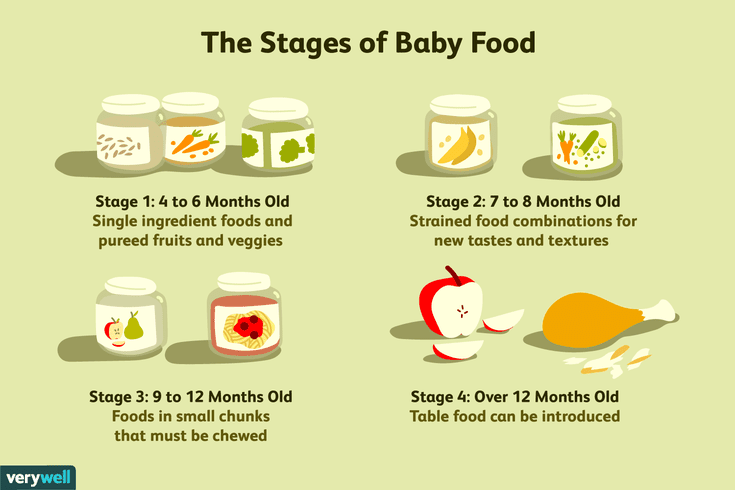 As the little one grows older and gets better at chewing, you can gradually feed him food that is thicker and coarser—for example, a thicker puree.
As the little one grows older and gets better at chewing, you can gradually feed him food that is thicker and coarser—for example, a thicker puree.
Related: Your Growing Baby
Food prep pointers
If you’re making your own baby food, make sure to prepare it without oil. Some great cooking methods are steaming, boiling, baking, or microwaving. No stir-frying or grilling yet for the little one! Remember to skip the sugar, salt and any other seasonings (e.g. soy sauce) when preparing the meals.
Related: From Goreng to Grill: Healthier Cooking Methods
Be patient
If your baby isn’t interested in a certain food, do not force it. There’s also no need to force your child to finish everything on his plate! Stop feeding him if he rejects the food, and try again during the next meal. Right now, your baby knows best about how much he wants to eat.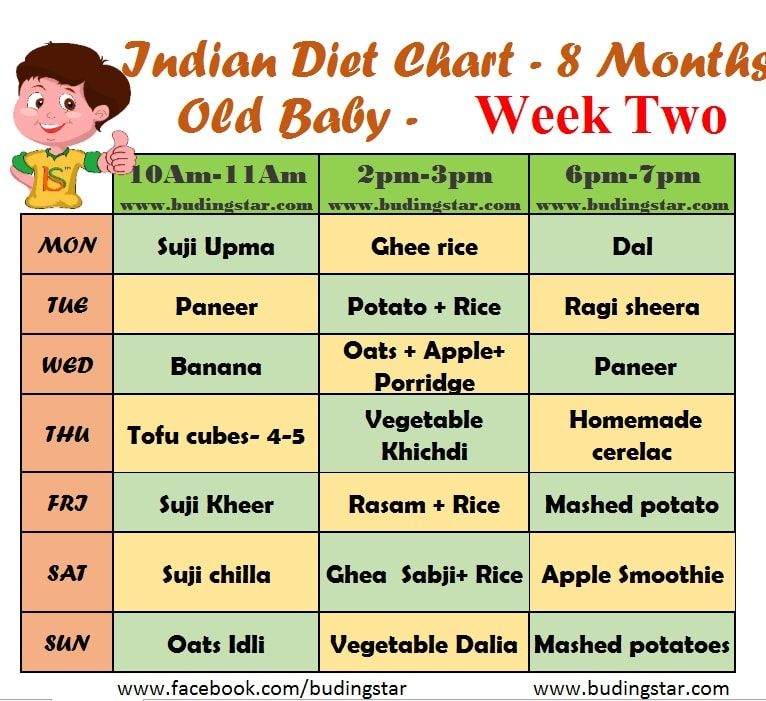
Related: Getting Ready for Solids
What makes 1 serving?
Brown rice and wholemeal bread | ½ bowl of brown rice/rice (100g) |
Fruit | 1 small apple, orange, pear or mango (130g) |
Vegetable | ¾ mug or 1 small rice bowl of cooked vegetables (100g) |
Meat and others | 1 palm-sized piece of fish, lean meat or skinless poultry (90g) |
This article was last reviewed on Tuesday, November 15, 2022
Programmes You May Like
View More Programmes
Stay Well to Stay Strong
Kickstart your healthy habits today with good hygiene practices, an active lifestyle, a balanced diet and sufficient sleep.
Programmes You May Like
View More Programmes
Catalog-Item Reuse
Your little one is now 7 months of age. Should you change up his meal schedule? Or adjust the amount of food? Here’s what our experts have to say.
<div><div><p>
By Health Promotion Board in collaboration with A/Prof Mary Daniel Lourdes, Head & Senior Consultant, Clinical Services, Department of Child Development, KK Women's and Children's Hospital. </p><p>At 7 months old, your baby may already be on two solid meals a day. Fret not if he’s eating less solid food than that, as different babies progress at different speeds.</p><h3>Recommended Number of Servings (7 months)</h3><p>Here are the recommended number of servings per day for your baby's development. Remember, these numbers are only recommendations. Let your baby decide how much he wants to eat!</p><div><table border="1" cellspacing="0" cellpadding="0"><tbody><tr><td>
</p><p>At 7 months old, your baby may already be on two solid meals a day. Fret not if he’s eating less solid food than that, as different babies progress at different speeds.</p><h3>Recommended Number of Servings (7 months)</h3><p>Here are the recommended number of servings per day for your baby's development. Remember, these numbers are only recommendations. Let your baby decide how much he wants to eat!</p><div><table border="1" cellspacing="0" cellpadding="0"><tbody><tr><td>
<strong>Brown rice and wholemeal bread</strong></td><td>
<strong>Fruit</strong></td><td>
<strong>Vegetables</strong></td><td>
<strong>Meat and others</strong></td><td>
<strong>Milk (breast/formula)</strong></td></tr><tr><td>1-2</td><td>½</td><td>½</td><td>½</td><td>500-750ml</td></tr></tbody></table></div><p>
</p><h3>7-month-baby Meal Schedule
</h3><p>Your meal schedule for the little one might look like this:
</p><ul><li>
<strong>Early morning snack:</strong> 150ml breast milk/formula
</li><li>
<strong>Breakfast:</strong> 3 to 4 tablespoons of rice cereal mixed with 60ml breast milk/formula</li><li>
<strong>Mid-morning snack:</strong> 180ml breast milk/formula</li><li>
<strong>Lunch:</strong> ¼ to ¾ bowl* of solid food</li><li>
<strong>Afternoon snack: </strong>180ml breast milk/formula</li><li>
<strong>Dinner: </strong>¼ to ¾ bowl* of solid food</li><li>
<strong>Evening snack:</strong> 180ml breast milk/formula</li>
*Rice bowl </ul><p></p><p>Right now, your baby’s meals may typically be made up of a base wholegrain/grain (e.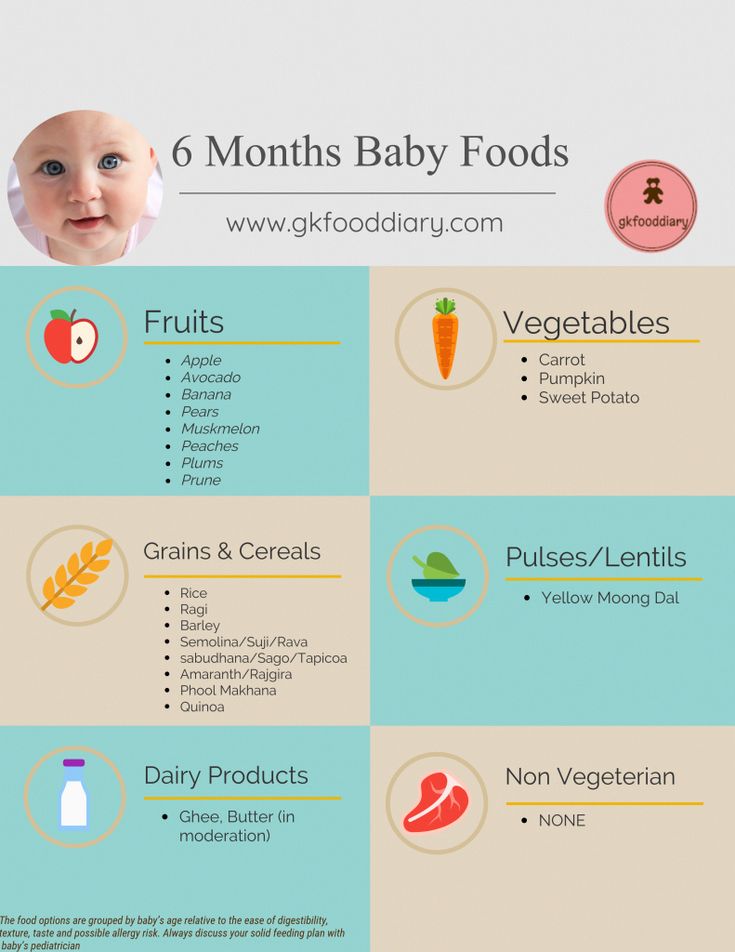 g. porridge) mixed with vegetable (e.g. pureed broccoli) and meat/others (e.g. tofu), perhaps with a tiny portion of fruit (e.g. apple and other fruit puree) when your baby feels up for it.
g. porridge) mixed with vegetable (e.g. pureed broccoli) and meat/others (e.g. tofu), perhaps with a tiny portion of fruit (e.g. apple and other fruit puree) when your baby feels up for it.
</p><p>Broken down into these components, there are countless yummy meal combos you and your baby can explore. Just mix and match and let your creativity go wild! Read on for ideas on what you can feed your 7-month-old tot.</p><p>
<strong>Related:
<a href="https://www.healthhub.sg/live-healthy/1243/baby-nutrition-for-your-toddler" title="Nutrition for Your Toddler">Nutrition for Your Toddler</a></strong></p></div><div><h3>7-month-old Baby Food Ideas for Mummy and Daddy
</h3><p>
<img src="/sites/assets/Assets/Categories/Pregnancy%20and%20Infant%20Health/35_Opmz_621145626.jpg" alt="7-month baby diet includes pureed veggies " />
</p><h4>Along the grain</h4><p>You know brown rice cereal and brown rice porridge are good staples for your baby.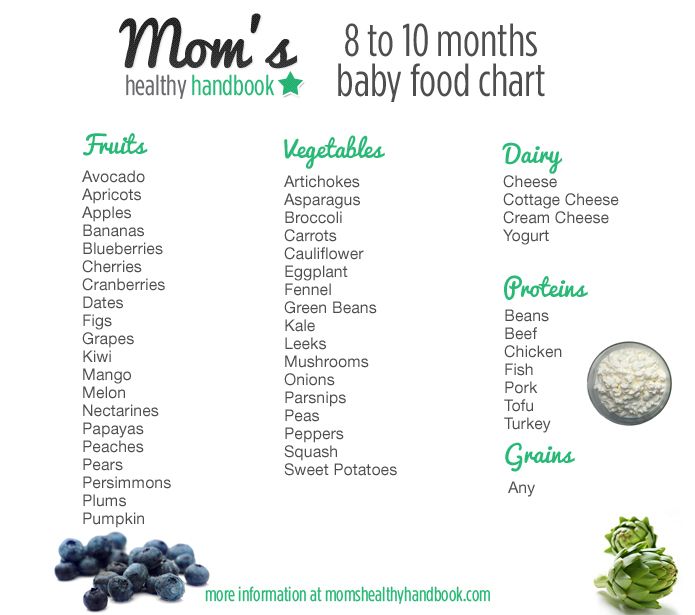 But you’re ready to branch out. Why not try other iron-fortified cereals made from other wholegrains such as oat, barley, or millet? They are great sources of vitamins and minerals.
But you’re ready to branch out. Why not try other iron-fortified cereals made from other wholegrains such as oat, barley, or millet? They are great sources of vitamins and minerals.
</p><p>
<strong>Related:
<a href="https://www.healthhub.sg/live-healthy/1831/no-wholegrain-no-gain" title="No Wholegrain, No Gain">No Wholegrain, No Gain</a></strong></p><h4>Variety of veggies</h4><p>Pureed carrots, pumpkin, spinach… your baby might have already tried these typical “baby foods”. Expand the veggie menu: your baby might enjoy other vegetables such as butternut squash or brinjal, which can both be steamed until tender for effortless mashing. Broccoli and cauliflower are also mashable veggie options that are good sources of vitamin C.</p><p>
<strong>Related:
<a href="https://www.healthhub.sg/live-healthy/514/Benefits%20of%20Fruit%20and%20Vegetables" title="Harness the Goodness of Fruit and Vegetables">Harness the Goodness of Fruit and Vegetables</a></strong></p><h4>Fruity fun</h4><p>As for fruit, mummy and daddy can try venturing out of the sweet zone: your little one might enjoy the tart taste of fruit like cherries or plums (pits removed and pureed). So try feeding your little one some sour treats — and watch his face for when the flavour first hits him. Adorable! Note to mum and dad: no citrus fruit yet, though, as those are too acidic.</p><p>Baby not into sour fruit just yet? Why not try feeding him every millennial’s favourite fruit: the avocado! It’s easy to mash, and adds a subtle sweet flavor and creaminess to rice cereals.</p><p>
So try feeding your little one some sour treats — and watch his face for when the flavour first hits him. Adorable! Note to mum and dad: no citrus fruit yet, though, as those are too acidic.</p><p>Baby not into sour fruit just yet? Why not try feeding him every millennial’s favourite fruit: the avocado! It’s easy to mash, and adds a subtle sweet flavor and creaminess to rice cereals.</p><p>
<strong>Related:
<a href="https://www.healthhub.sg/live-healthy/1291/fun-fruity-facts" title="Fun Fruity Facts">Fun Fruity Facts</a></strong></p><h4>
</h4><h4>
<img src="/sites/assets/Assets/Categories/Pregnancy%20and%20Infant%20Health/35_Opmz_597211418.jpg" alt="Avocado is easy to mash, sweet and creamy – perfect for 7-month-old babies" />
</h4><h4>
</h4><h4>Meet meat alternatives</h4><p>Chicken and tofu are the safe baby food options, but your baby might be ready to handle other types of protein. Looking for a protein-packed alternative to meat? Try pulses like mashed chickpeas or kidney beans.</p><p>You can also introduce junior to fish such as salmon and cod—make sure you flake and mash them well. Do talk to your pediatrician before feeding fish to your baby if he has:
Looking for a protein-packed alternative to meat? Try pulses like mashed chickpeas or kidney beans.</p><p>You can also introduce junior to fish such as salmon and cod—make sure you flake and mash them well. Do talk to your pediatrician before feeding fish to your baby if he has:
</p><ol><li>Had an allergic reaction to food in the past</li><li>A food allergy</li><li>Chronic (long-term) eczema</li></ol><p></p><p>Keep observing your child for signs of an allergic reaction after you feed him fish, as it is one of the most common food allergens. Signs include facial swelling, rashes, vomiting, diarrhea, and difficulty in breathing. Take your baby to the doctor if you spot any of these signs.</p><p>
<strong>Related:
<a href="https://www.healthhub.sg/live-healthy/190/soya_unique_plant_protein" title="Soya—The Unique Plant Protein">Soya—The Unique Plant Protein</a></strong></p></div><div><h3>Try These Solid Meals!</h3><p>
<strong>Breakfast</strong> </p><ul><li>Oat cereal with breast/formula milk with pureed cherries</li><li>Brown rice porridge with pumpkin puree</li></ul><p></p><p>
<strong>Lunch/Dinner</strong> </p><ul><li>Brown rice porridge with mashed chickpea and mashed cauliflower + tablespoonful of pureed plums</li><li>Brown rice porridge with mashed butternut squash and mashed cod</li><li>Millet cereal with apple and spinach puree, with pureed chicken</li></ul><p></p><p>
<strong>Related:
<a href="https://www.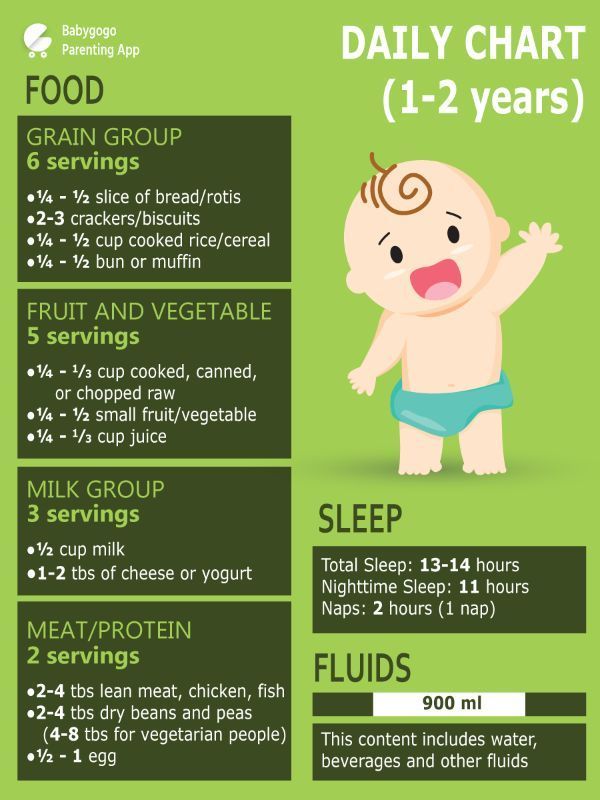 healthhub.sg/live-healthy/617/wholegrain%20for%20children" title="Introducing Wholegrains to Your Child">Introducing Wholegrains to Your Child</a></strong></p></div><div><h3>Friendly Reminders for Mum and Dad</h3><h4>6 to 9 months: smooth, soft and fine texture</h4><p>When you first start your baby on solids, the food you feed him should be smooth, soft, and fine in texture. As the little one grows older and gets better at chewing, you can gradually feed him food that is thicker and coarser—for example, a thicker puree.</p><p>
healthhub.sg/live-healthy/617/wholegrain%20for%20children" title="Introducing Wholegrains to Your Child">Introducing Wholegrains to Your Child</a></strong></p></div><div><h3>Friendly Reminders for Mum and Dad</h3><h4>6 to 9 months: smooth, soft and fine texture</h4><p>When you first start your baby on solids, the food you feed him should be smooth, soft, and fine in texture. As the little one grows older and gets better at chewing, you can gradually feed him food that is thicker and coarser—for example, a thicker puree.</p><p>
<strong>Related:
<a href="https://www.healthhub.sg/live-healthy/9/guide_your_growing_baby" title="Your Growing Baby">Your Growing Baby</a></strong></p><h4>Food prep pointers</h4><p>If you’re making your own baby food, make sure to prepare it without oil. Some great cooking methods are steaming, boiling, baking, or microwaving. No stir-frying or grilling yet for the little one! Remember to skip the sugar, salt and any other seasonings (e.g. soy sauce) when preparing the meals.</p><p>
No stir-frying or grilling yet for the little one! Remember to skip the sugar, salt and any other seasonings (e.g. soy sauce) when preparing the meals.</p><p>
<strong>Related:
<a href="https://www.healthhub.sg/live-healthy/1804/from-goreng-to-grill-healthier-cooking-methods" title="From Goreng to Grill: Healthier Cooking Methods">From Goreng to Grill: Healthier Cooking Methods</a></strong></p><h4>
</h4><h4>
<img src="/sites/assets/Assets/Categories/Pregnancy%20and%20Infant%20Health/35_Opmz_913370376.jpg" alt="Steaming is a healthy way to prepare food for your 7-month-old baby" />
</h4><h4>
</h4><h4>Be patient</h4><p>If your baby isn’t interested in a certain food, do not force it. There’s also no need to force your child to finish everything on his plate! Stop feeding him if he rejects the food, and try again during the next meal. Right now, your baby knows best about how much he wants to eat.</p><p>
Right now, your baby knows best about how much he wants to eat.</p><p>
<strong>Related:
<a href="https://www.healthhub.sg/live-healthy/1227/baby-getting-ready-for-solids" title="Getting Ready for Solids">Getting Ready for Solids</a></strong></p><h4>What makes 1 serving?</h4><div><table cellspacing="0" border="1"><tbody><tr><td><p>
<strong>Brown rice and wholemeal bread</strong></p></td><td><p>½ bowl of brown rice/rice (100g)
½ bowl of noodles, spaghetti or beehoon (100g)
1 large potato (180g)
</p></td></tr><tr><td><p>
<strong>Fruit</strong></p></td><td><p>1 small apple, orange, pear or mango (130g)
1 wedge pineapple, papaya or watermelon (130g)
1 medium banana</p></td></tr><tr><td><p>
<strong>Vegetable</strong></p></td><td><p>¾ mug or 1 small rice bowl of cooked vegetables (100g)
¼ plate of vegetables</p></td></tr><tr><td><p>
<strong>Meat and others</strong></p></td><td><p>1 palm-sized piece of fish, lean meat or skinless poultry (90g)
2 small blocks of soft beancurd (170g)
¾ cup or 1 small rice bowl of cooked pulses (e. g. lentils) (120g)</p></td></tr></tbody></table></div></div><div>
g. lentils) (120g)</p></td></tr></tbody></table></div></div><div>
<p>
<strong>For more information on early nutrition and weaning recipes for your little one, visit
<a href="https://www.healthhub.sg/programmes/122/early-nutrition-for-babies" title="Early Childhood Nutrition">Early Childhood Nutrition.</a></strong></p><p>
<a href="https://www.healthhub.sg/programmes/183/parent-hub/baby-toddler">Visit Parent Hub, for more useful tips and guides to give your baby a healthy start.</a></p><p>
<em>Download the HealthHub app on
<a href="https://play.google.com/store/apps/details?id=sg.gov.hpb.healthhub&hl=en_SG" target="_blank" rel="nofollow">Google Play</a> or
<a href="https://itunes.apple.com/sg/app/healthhub-sg/id1034200875?mt=8" target="_blank" rel="nofollow">Apple Store</a> to access more health and wellness advice at your fingertips.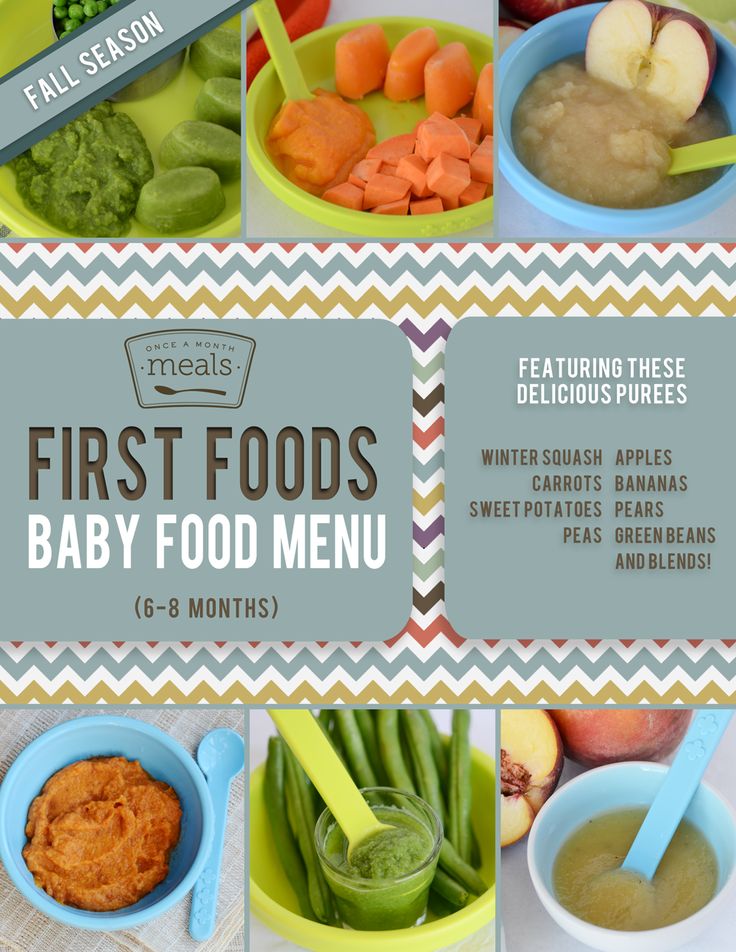 </em> </p><hr /><p>
</em> </p><hr /><p>
<strong>Read these next:</strong></p><ul><li>
<a href="https://www.healthhub.sg/live-healthy/1927/Breastfeeding-as-a-Working-Mother" title="Breastfeeding as a Working Mother">Breastfeeding as a Working Mother</a>
</li><li>
<a href="https://www.healthhub.sg/live-healthy/156/babys_first_food_journey" title="Baby's First Food Journey">Baby's First Food Journey</a></li><li>
<a href="https://www.healthhub.sg/live-healthy/2028/nutrition-for-toddlers-12-24-months" title="Early Childhood Nutrition: Food Guide for Your One-Year- Old">Early Childhood Nutrition: Food Guide for Your One-Year- Old</a>
</li><li>
<a href="https://www.healthhub.sg/live-healthy/1959/Early-Nutrition-Baby-Switching-Cows-Milk" title="Early Nutrition: Switching to Cow’s Milk for Babies">Early Nutrition: Switching to Cow’s Milk for Babies</a> </li><li>
<a href="https://www.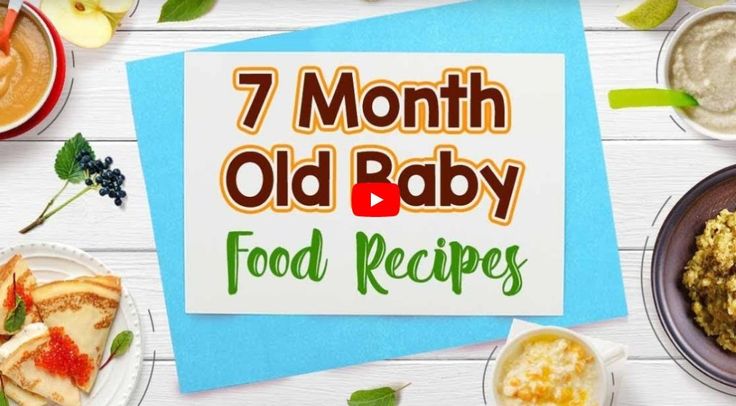 healthhub.sg/live-healthy/2020/getting-baby-started-on-solids" title="Getting Your Baby Started on Solids">Getting Your Baby Started on Solids</a> </li><li>
healthhub.sg/live-healthy/2020/getting-baby-started-on-solids" title="Getting Your Baby Started on Solids">Getting Your Baby Started on Solids</a> </li><li>
<a href="https://www.healthhub.sg/live-healthy/1579/things-new-dads-need-to-know" title="Things New Dads Need to Know">Things New Dads Need to Know</a>
</li></ul></div></div>
Thursday, October 25, 2018
Thursday, November 1, 2018
No
2021
Tuesday, November 15, 2022
<div>Health Promotion Board </div>
/sites/assets/Assets/Logos%20and%20Official/HPB%20CMYK%20Logo%20Padded. jpg
jpg
Health Promotion Board
https://www.hpb.gov.sg
7-month-baby Diet: An Authoritative Guide by Our Experts
Articles
Diet for a child aged 7 months
When compiling a diet for a seven-month-old baby, distribute the products so that you get a certain prototype of the menu of an already grown-up child with breakfast and lunch.
At this age, the yolk of a boiled chicken egg, a valuable source of fat, vitamin B12, A, phosphorus and selenium, is introduced into the child's diet. Chopped yolk can be added to porridge or vegetable puree.
At the age of 7 months, you can already give your baby a cracker (in the form of dried bread) and baby biscuits.
The volume of fruit puree and juice is increased to 70 g.
It is still better to give preference to commercially produced complementary foods, given their high degree of safety and variety. If the baby does not perceive a new product the first time, it can be mixed with an already familiar product.
Approximate diet for a child aged 7 months.
| I feeding 6 hours | Breast milk or VHI* | 200 ml |
| II feeding 10 hours | Dairy-free or milk porridge ** Butter Boiled egg yolk Supplementation with breast milk or VHI | 150 g |
| III feeding 14 hours | Vegetable puree Vegetable oil Meat puree Fruit juice | 170 g approx. 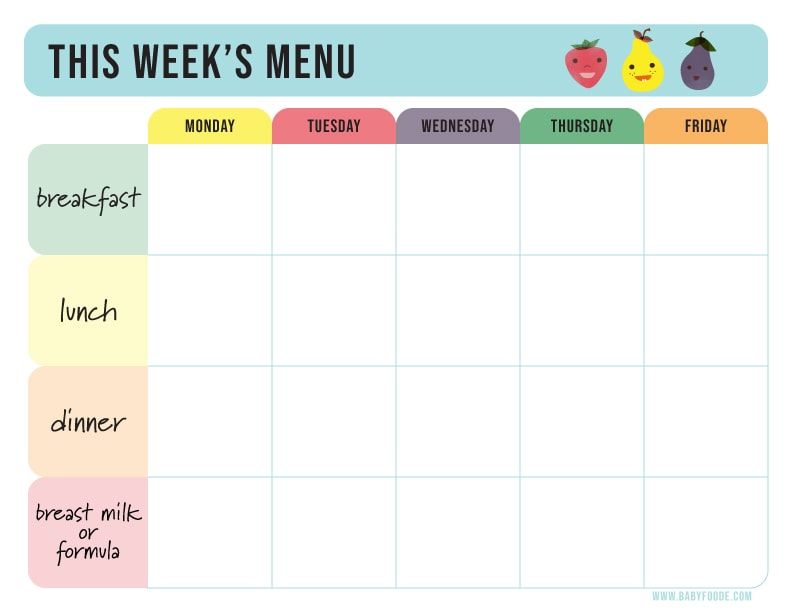 1 tsp. 1 tsp. 30 g 70 ml |
| IV feeding 18 hours | Fruit puree Baby biscuits Breast milk supplement or VHI | 70 g |
| V feeding 22 hours | Breast milk or VHI | 200 ml |
* - infant formula
** - dairy-free porridge should be diluted with breast milk or infant formula that the child receives. Milk porridge is diluted with water.
Approximate diet of a 7-month-old child with cow's milk protein allergy:
| I feeding 6 hours | Breast milk or formula for infants with intolerance to cow's milk proteins | 200 ml |
| II feeding 10 hours | Dairy-free porridge* Vegetable oil Fruit puree (apple, pear) | 130 g approx.  1 tsp. 1 tsp. 70 g |
| III feeding 14 hours | Vegetable puree Vegetable oil Meat puree (rabbit, turkey) | 170 g approx. 1 tsp. 30 g |
| IV feeding 18 hours | Vegetables or dairy-free porridge** Vegetable oil Meat puree | 180 g approx. 1 tsp. 20 g |
| V feeding 22 hours | Breast milk or medicated formula for infants with cow's milk protein intolerance | 200 ml |
* - dairy-free porridge should be diluted with breast milk or formula for children with intolerance to cow's milk proteins.
** - you can either alternate porridge or vegetables, or offer a mixed dish - porridge with vegetables.
Baby menu at 7 months: what is possible and what is not yet
- Anastasia Ivanovna, what are the nutritional features of children at 7 months?
- The menu for a baby at seven months is different from the menu for a newborn and a baby at one year old. This difference exists due to the fact that a number of body systems, including the gastrointestinal tract and oral cavity, have not yet been formed in a newborn, he is only learning to suck. From four to six months, the diet begins to include complementary foods - food that is different from breast milk or infant formula. In the year of the child, in ideal conditions, they are transferred to a common table.
This difference exists due to the fact that a number of body systems, including the gastrointestinal tract and oral cavity, have not yet been formed in a newborn, he is only learning to suck. From four to six months, the diet begins to include complementary foods - food that is different from breast milk or infant formula. In the year of the child, in ideal conditions, they are transferred to a common table.
Some pediatricians recommend introducing complementary foods from five to six months, sometimes even from four. But the enzymatic system of the baby's body has not yet been formed, so pedagogical complementary foods are possible at four or five months, and pediatric complementary foods by six months.
— How to combine breastfeeding or bottle feeding with complementary foods?
— Pediatricians and nutritionists recommend separating these meals and giving the main dairy food and complementary foods in separate meals so that the child understands what he is eating.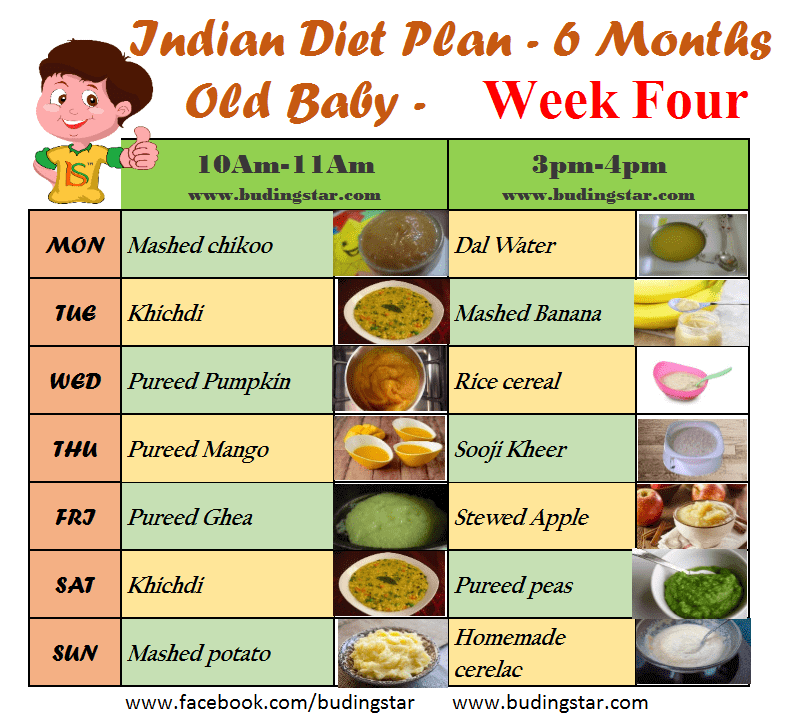
If complementary foods started at 4-5 months
— What rules of baby food should parents know?
— The functions of the gastrointestinal tract are formed in such a way that the body needs to adapt to the incoming products. With proper complementary foods, it is important to monitor the child's condition in the food diary and, if necessary, consult a doctor.
Basic feeding recommendations for seven-month-old babies
- One new product is given in small doses at the beginning of the day every four days to monitor for allergies, constipation, peeling and other reactions.
- One new food can be given per feeding.
- Water is best offered between feedings and not given with complementary foods.
- Do not force-feed: if the child refuses a certain dish, it can be offered at another time and in a different form.
- The child is not given unfamiliar food when he is not in a very good mood, teething, or has just been vaccinated.
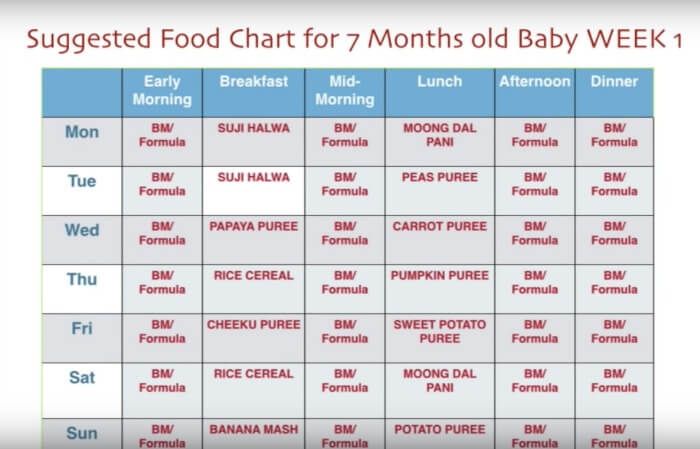
- How to identify food allergies and find the allergen?
- Observant mothers will see or hear the problem. The baby will have something on the body, constipation or indigestion will begin. A restless child will cry. To track the allergen, it is advisable to keep a food diary and keep your finger on the pulse. If there is a connection with the pediatrician, ask questions and, taking into account the vaccination calendar, the physiology of the development of your child, offer him certain products so as not to once again provoke an immune response.
What foods can be given at 7 months
Read also
- Why it is necessary to introduce meat complementary foods into the baby's diet and with what products it can be combined.
- What purees and cereals can be given at 7 months?
- If this is the first complementary food for a baby, then monocomponent purees, dairy-free and milk porridges with one cereal in the composition are good: they are easier to digest and it is easier to track the reaction of the body using them.
— In what order can complementary foods be given?
— If your baby is overweight by the age of seven months, it is better to feed him vegetable puree. If everything is in order with weight, then preference can be given to cereals. All new products are introduced gradually: they begin to feed in the amount of 5-10 g, gradually increasing the volume to 50 g. By seven months, a portion of porridge at one time can reach up to 200 g. The third option for complementary foods, if parents want, can be fruit. It is in this sequence, because fruits are sweet, and the child does not always eat unleavened vegetables or cereals after them.
Each product will also have its own processing specifics:
- vegetables and fruits are given in the form of puree;
- purchased cereals are prepared according to the instructions;
- homemade porridges are boiled in water, then milk or mixture is added if desired;
- cottage cheese is properly stored in the refrigerator, tracking the expiration date;
- dairy, vegetable broths are brought to a single consistency (puree) so that the child develops the correct perception of the product.

— How many times to feed a baby at 7 months and how much food to give?
- You need to focus on five feedings per day. If your baby cannot tolerate the interval between meals, it is worth supplementing with breast or formula after the introduction of complementary foods.
How to calculate complementary foods
A baby at seven months should weigh about eight kilograms. 1/8 of the child's weight is the daily amount of food, that is, approximately a kilogram of food, taking into account all feedings, or 200 grams per meal.
Sample menu for a 7-month-old baby (Russian Federation)
— At what age can semi-solid and solid foods be introduced into a child's diet?
- By 6 months, most babies are ready for a new food: the baby realizes that something is hard in his mouth. By the age of seven months, the skill of palmar grip is formed: the child is able to hold solid food in his hand, and he can be given biscuits and crackers to grind. Allergists and pediatricians consider 6-10 months as the optimal period to begin the introduction of semi-solid and solid foods. But if the swallowing apparatus is not formed, there may be problems with chewing and swallowing disorders up to the gag reflex.
By the age of seven months, the skill of palmar grip is formed: the child is able to hold solid food in his hand, and he can be given biscuits and crackers to grind. Allergists and pediatricians consider 6-10 months as the optimal period to begin the introduction of semi-solid and solid foods. But if the swallowing apparatus is not formed, there may be problems with chewing and swallowing disorders up to the gag reflex.
— What should parents do if their child refuses to eat? How to create food interest?
— It is necessary to understand the reasons for the baby's refusal to eat, among which may be: The pediatrician will track changes in health according to analyzes and, if necessary, adjust the diet.
At seven months, significant changes occur in the functioning of the gastrointestinal tract, the child actively shows interest in "adult" products, in new tastes. It will be easier for the baby to readjust if you choose products that will match his physiology and fully cover his needs for growth and communication.

 g. lentils) (120g)
g. lentils) (120g)